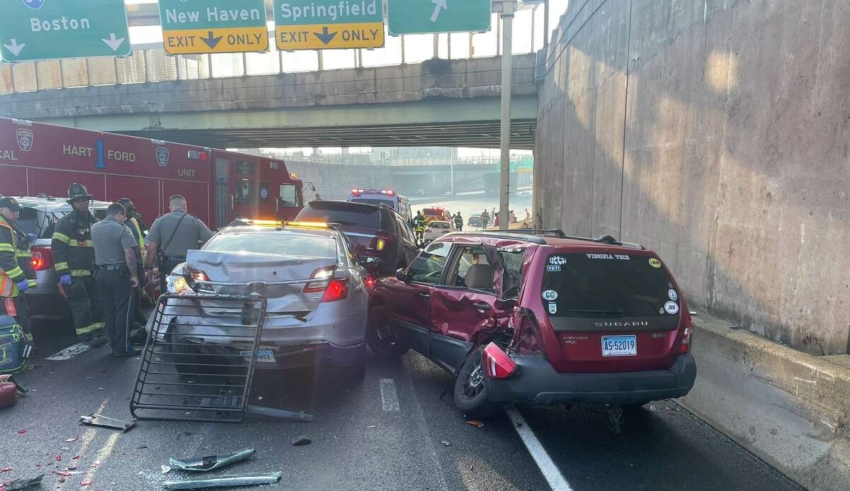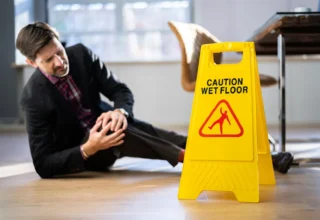
Rear-end accidents are common on the roads. If you’re driving in Connecticut, chances are you’ve seen or been in one. Knowing who’s at fault in these accidents is crucial. This is not just about pointing fingers but understanding how liability works in the state.
If you’ve been in a rear-end accident or know someone who has, contacting a Hartford car accident lawyer can be smart. They can clarify the ins and outs of these accidents and help you know your rights and options.
Table of Contents
Connecticut’s Negligence Laws
In Connecticut, the modified comparative negligence rule determines fault in rear-end collisions. This rule compares how much each driver is to blame. If you’re found to be more than 50% at fault, you can’t collect damages from the other driver.
How This Rule Impacts Rear-End Accidents
When it comes to rear-end accidents, this rule plays a big part. For instance, you might share some of the blame if you’re rear-ended but have broken brake lights.
A Hartford car accident lawyer would tell you that if you’re 20% at fault and the other driver is 80% at fault, you can only collect 80% of the damages. It’s essential to understand this rule to know your rights and potential responsibilities in a rear-end accident in Connecticut.
Presumption of Fault in Rear-End Accidents
Most people believe that if there’s a rear-end accident, the driver at the back is at fault. It’s a widely held view because, in many cases, the rear driver failed to stop in time or wasn’t paying attention.
Challenging the Presumption
Fault in rear-end accidents is not always clear. However, there are situations where this general belief can be questioned. For instance:
● If the front vehicle had malfunctioning brake lights, making it hard for the rear driver to anticipate a stop.
● If the front vehicle suddenly reverses into the car behind.
● Sudden and unexpected stops by the front car without a clear reason.
In cases like these, a Hartford car accident lawyer can help dissect the details and challenge the typical presumption of fault in rear-end accidents. It’s crucial to know that while the rear driver is often blamed, it’s not a one-size-fits-all rule.
Situations Where the Front Driver May Share Blame or Be At Fault
Understanding the situations when the front driver may share blame for the accident includes the following:
Brake Lights Malfunction or Not Working
Drivers need to ensure that their brake lights are in working order. If the front vehicle’s brake lights are malfunctioning or not working at all, it can lead the rear driver to misjudge when to stop. This oversight can be a significant factor when determining fault, as a Hartford car accident lawyer might highlight the importance of functioning lights for safety.
Reversing Suddenly Without Cause
Drivers expect vehicles in front of them to move forward, especially on roads with continuous traffic. If a front driver suddenly reverses without apparent reason, it can catch the rear driver off guard, leading to a collision. Such unpredictable behavior can shift a portion or all blame onto the front driver.
Stopping Abruptly to Make a Turn but Failing to Execute the Turn
Indecision on the road can be dangerous. If a driver stops suddenly intending to make a turn but doesn’t go through with it, it can confuse the driver behind. Not executing a signaled turn can lead to unexpected stops, making the front driver partially or wholly responsible for a rear-end accident.
Stopping in a Travel Lane Without Warning, Especially at Night or in Poor Visibility Conditions
Travel lanes are meant for continuous driving. When a vehicle stops in a travel lane without warning, especially during low visibility conditions like nighttime or fog, it poses a significant risk for rear-end collisions. Under these circumstances, the front driver’s decision to halt unexpectedly can be considered negligent, and they may share the blame or be entirely at fault.
External Factors that Can Influence Fault Determination
While human error and negligence may cause a rear-end accident, this is not always the case. Sometimes, external factors are to blame. Some common external factors that may influence fault in a rear-end accident include:
Road Conditions (e.g., Ice, Potholes)
The state of the road plays a significant role in many accidents. Slippery surfaces from ice can reduce traction, and potholes can jolt a vehicle out of its path. When vehicles collide under such conditions, it’s essential to consider whether road conditions are a primary cause. An auto accident lawyer might argue that these factors could reduce a driver’s fault in a rear-end collision.
Mechanical Failures
Cars are machines, and sometimes they break down. If a vehicle’s brakes fail or the engine stalls suddenly, leading to a rear-end accident, it’s crucial to assess the mechanical malfunction’s role. Mechanical failures can shift the blame, especially if a vehicle was regularly maintained and the failure was unexpected.
Third-party Interventions (another vehicle, pedestrian, etc.)
Sometimes, another vehicle or a pedestrian can act unpredictably, causing one car to brake suddenly and leading to a rear-end collision. For instance, a car might swerve into a lane without warning, or a pedestrian might dash onto the road. In such scenarios, the responsibility might not lie entirely with the front or rear driver but could be attributed to this third-party intervention.
Traffic Signals and Signs
Traffic signals and signs guide drivers and maintain order on the roads. If a driver disobeys these signals, like running a red light or ignoring a stop sign, leading to a rear-end collision, the fault could lie with the offending driver. Understanding how drivers respond to traffic signals and signs is crucial when determining fault in rear-end accidents.
Determining Fault in a Hartford Rear-End Accident
If you are involved in a rear-end accident, several factors must be considered to determine fault. Keep the information here in mind, which will help you understand who can be held responsible. It is also advisable to work with a car accident lawyer who has experience determining fault in rear-end accidents.














